We’ve all been there: you’ve got leftover takeout in a convenient styrofoam container, and the microwave is calling. It seems like the easiest way to reheat your meal, but is it truly safe? The question of microwaving styrofoam isn’t as simple as a yes or no, and overlooking the risks could have implications for your health and even your kitchen.
While styrofoam is excellent for insulation, its composition can pose problems when exposed to the high temperatures of a microwave. Understanding what happens when this common material heats up is crucial for making informed decisions about your food and your well-being.
What Exactly is Styrofoam?
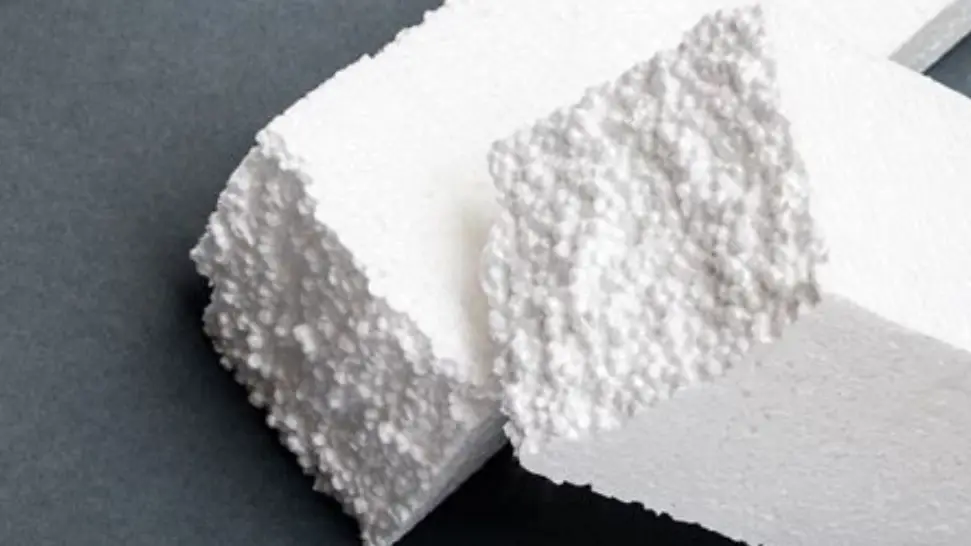
“Styrofoam” is a commonly used, though often misused, term that refers to expanded polystyrene (EPS) foam, a lightweight and rigid plastic material.
While “Styrofoam” is technically a trademarked brand name for extruded polystyrene (XPS) foam used primarily in building insulation (often recognized by its blue or pink color), the white, brittle foam used for disposable coffee cups, food containers, and packaging is typically expanded polystyrene.
Both EPS and XPS are derived from polystyrene, a synthetic polymer made from styrene monomers, which are themselves derived from petroleum. The foamed structure, which is mostly air, gives these materials their excellent insulating and cushioning properties.
Can You Microwave Styrofoam?
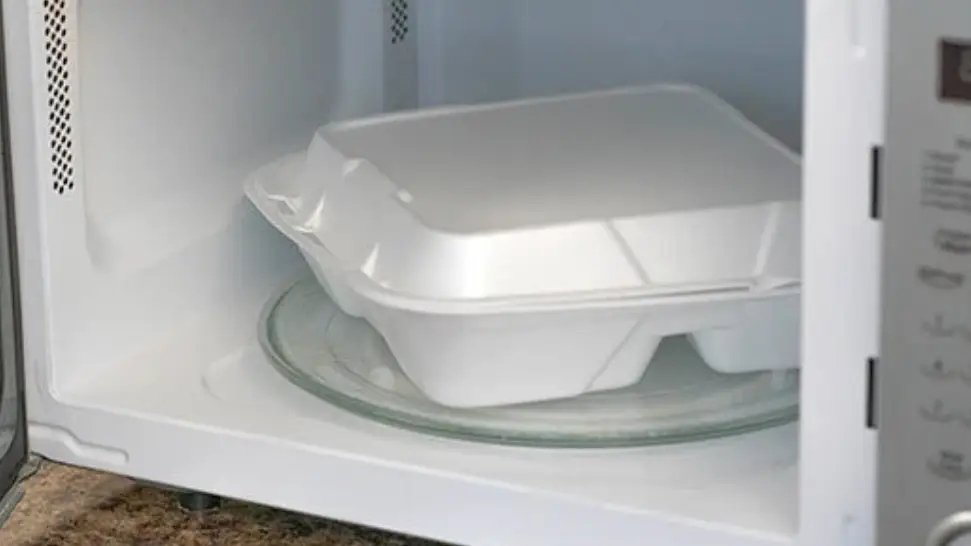
Generally, it is not recommended to microwave styrofoam unless it is explicitly labeled as “microwave-safe.” The material commonly referred to as styrofoam (expanded polystyrene or EPS) is designed for insulation, keeping food hot or cold, but not for direct heat exposure in a microwave. When heated, particularly with high-fat foods, non-microwave-safe styrofoam can soften, melt, or deform.
The primary concern with microwaving unapproved styrofoam is the potential for chemicals, most notably styrene, to leach into your food. Styrene is a compound used in the manufacturing of polystyrene and has been identified as a possible human carcinogen by the Centers for Disease Control and Prevention (CDC) at high levels of exposure. While the concentrations that may leach into food from a single microwaving incident are often small, repeated exposure over time raises concerns.
- Physical damage: Unsafe styrofoam can melt, warp, or crack, potentially spilling hot food and causing burns.
- Check for a “microwave-safe” label: This is the most crucial indicator. It typically looks like wavy lines or a microwave icon.
- Avoid unless labeled: If there’s no label, assume it’s not safe.
- Chemical leaching: Heating can cause styrene and other chemicals to migrate into your food.
Why Microwaving Styrofoam is Generally Not Recommended?
Microwaving styrofoam is generally not recommended due to a combination of physical and chemical concerns.
Microwaving Styrofoam is usually discouraged because it can release harmful chemicals and melt under high heat, potentially contaminating food. Styrofoam is made from polystyrene, which isn’t designed for intense microwave energy, making it unsafe for prolonged or repeated use with hot meals.
- Structural Weakness: Heat weakens the container, making it prone to cracking, spilling, or collapsing when holding hot liquids, leading to burns or accidents.
- Chemical Leaching: Styrofoam can release toxic substances like styrene when heated, which may seep into food and pose health risks, especially with fatty or oily foods.
- Melting and Deformation: Exposure to high microwave heat can warp or melt the Styrofoam container, creating messes and reducing its ability to safely hold food.
- Fire Hazard: Though rare, extremely high microwave temperatures can ignite thin Styrofoam, increasing fire risks in kitchens.
Potential Dangers and Health Risks of Microwaving Styrofoam
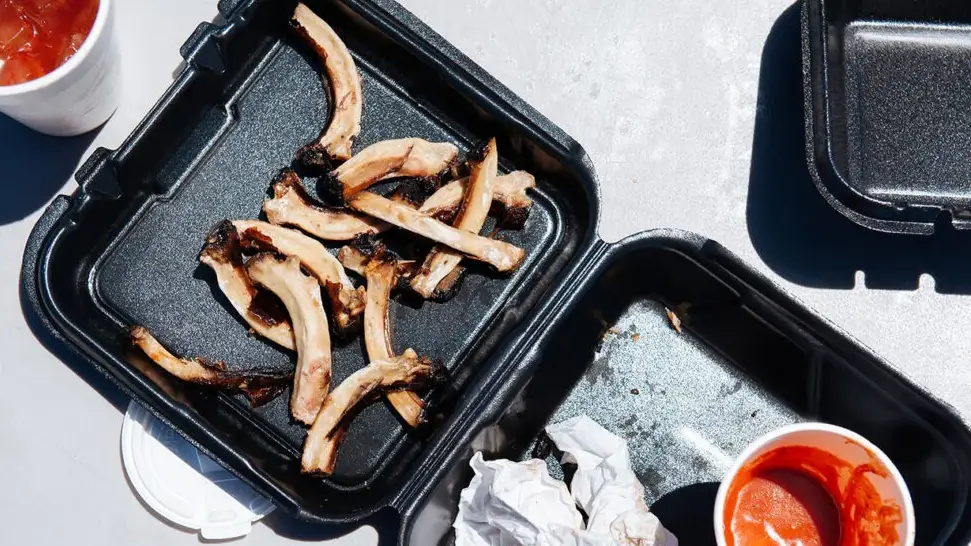
The potential dangers and health risks associated with microwaving non-microwave-safe styrofoam primarily stem from the material’s breakdown under heat. When heated in a microwave, the polystyrene can degrade, leading to the leaching of chemicals into your food. The most significant concern is styrene, a chemical compound that is a component of polystyrene.
Research has linked styrene exposure to various health issues, including being classified as a possible human carcinogen, particularly with chronic or high-level exposure. Even if no visible melting occurs, microscopic amounts of these chemicals can migrate into the food, especially with fatty or oily items, which can more readily absorb them. Beyond chemical concerns, non-microwave-safe styrofoam can melt and deform, potentially causing hot food to spill and leading to burns. In extreme cases, if heated for too long or if the microwave creates intense hot spots, there’s a slight fire hazard as the material can ignite.
- Fire Hazard: While less common, extreme overheating can cause styrofoam to ignite in the microwave, posing a fire risk.
- Leaching of Chemicals: Styrene, a component of polystyrene, can migrate into food when heated, especially with fatty foods. Styrene is considered a possible human carcinogen by some health organizations.
- Melting and Deforming: Non-microwave-safe styrofoam has a low melting point and can warp, melt, or crack, leading to spills and potential burns from hot food.
How to Tell if Styrofoam is Microwave-Safe?
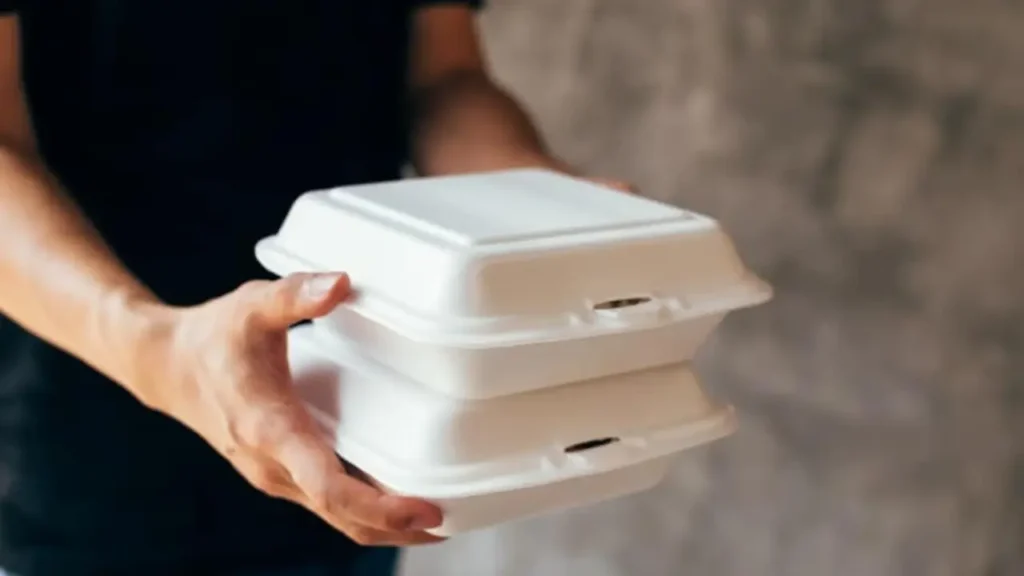
Determining whether a styrofoam container is microwave-safe is crucial for your health and safety. The best and most reliable way to check is to look for specific symbols or labels directly on the container.
Looking for the Microwave-Safe Symbol
The universal symbol for microwave-safe containers is typically a microwave icon with three wavy lines above or next to it, or simply wavy lines by themselves. These wavy lines are meant to represent microwave energy.
Sometimes, you might also see text that explicitly states “Microwave Safe” or “Safe for Microwave Use.” If you see any of these indicators, the manufacturer has designed and tested the product to withstand microwave heating, and the FDA generally considers them safe for that purpose.
Checking Manufacturer Guidelines
If there’s no visible symbol or text on the styrofoam container, it’s safest to assume it is not microwave-safe. Many single-use styrofoam containers, especially those used for takeout, are not designed for reheating and often lack these specific labels.
In such cases, it’s always best to transfer your food to a truly microwave-safe dish made of glass, ceramic, or a designated microwave-safe plastic (often marked with a recycling code #5, for polypropylene) before heating. When in doubt, err on the side of caution to avoid potential chemical leaching or container melting.
What About Specific Styrofoam Products?
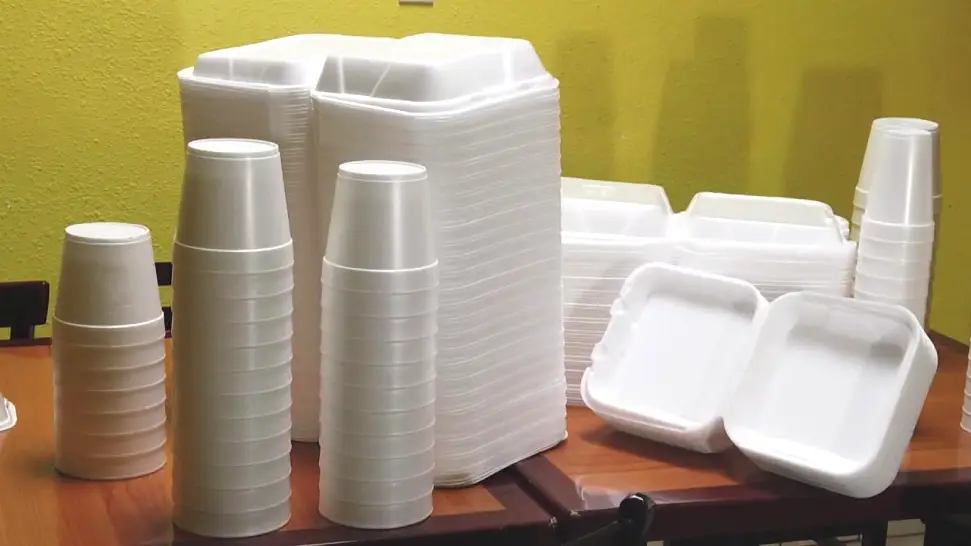
When it comes to microwaving styrofoam, not all products are created equal, and it’s essential to differentiate between them. The term “styrofoam” is often used generically, but the specific type of expanded polystyrene (EPS) can vary, as can its intended use. While the general rule is to avoid microwaving unless explicitly labeled, certain products are manufactured with microwave safety in mind.
Styrofoam Plates and Bowls
Many disposable “styrofoam” plates and bowls, commonly found at picnics or for casual dining, are not designed for microwave use. They are primarily made for serving food at room temperature or keeping it warm for a short period. Heating them in a microwave can cause them to warp, melt, and potentially leach chemicals into your food. Always look for the microwave-safe symbol on the bottom or packaging if you intend to use them in the microwave.
Takeout Containers and To-Go Boxes
Takeout containers and “to-go” boxes, especially those from restaurants, are generally not microwave-safe. Their main purpose is to transport food, not to reheat it. Restaurants often use these because they are inexpensive and good insulators for keeping food warm during transit.
Attempting to microwave food in them can lead to melting, chemical leaching, and an unpleasant experience. A common recommendation, for example, is that Panda Express containers are not microwave-safe, and you should always transfer your food to a microwave-safe plate before reheating.
Styrofoam Cups (Coffee Cups, Ramen Cups)
Styrofoam cups, particularly those used for hot beverages like coffee or instant ramen, are designed to insulate against heat but are not meant for direct microwave heating. While they can hold hot liquids, the heat from a microwave is much more intense and can cause the cup to deform or release chemicals. For instant ramen cups that come in styrofoam, it is generally advised to follow the instructions carefully, which often involve adding hot water but not microwaving the cup itself. Some brands like Dart do make specific cups labeled as microwave-safe, but this is the exception, not the rule.
- Coffee/Ramen Cups: Designed for insulation, not microwave heating; can deform and leach.
- General Rule: Assume all styrofoam is not microwave-safe unless explicitly labeled otherwise.
- Takeout Containers: Almost universally not safe for reheating. Transfer food to other dishes.
- Disposable Plates/Bowls: Often not microwave-safe; check for symbols.
What Happens if You Accidentally Microwave Styrofoam?
If you accidentally microwave styrofoam that isn’t labeled as microwave-safe, several things can happen, none of which are ideal. You might first notice the styrofoam melting, deforming, or shrinking, as its low melting point makes it susceptible to the microwave’s intense heat. This can lead to your food spilling or the container becoming unusable.
More concerning, however, is the potential for chemical leaching. Even if no visible melting occurs, the heat can cause styrene monomers and other chemical additives in the polystyrene to migrate from the container into your food. While the immediate health impact of a single accidental exposure is likely minimal, especially with non-fatty foods, it’s a practice best avoided to minimize any potential long-term risks.
You might also notice an unpleasant plastic-like odor emanating from the microwave, indicating the material is breaking down. In rare, extreme cases, if subjected to excessive heat or prolonged microwaving, styrofoam can even pose a slight fire hazard, though this is less common with typical reheating times.
- Potential Fire Hazard: In very rare cases of extreme overheating, the styrofoam could ignite.
- Melting, Deforming, or Shrinking: The styrofoam container will likely lose its shape or even melt, potentially leading to spills.
- Chemical Leaching: Harmful chemicals, particularly styrene, can migrate from the degrading styrofoam into your food.
- Unpleasant Odor: A distinct plastic or chemical smell might be noticeable, indicating material breakdown.
Safer Alternatives to Microwaving Styrofoam
Given the concerns associated with microwaving styrofoam, it’s wise to opt for safer alternatives when reheating food. The best choices are materials that are specifically designed to withstand microwave temperatures without degrading or leaching chemicals.
- Silicone Dishes: Food-grade silicone is another flexible and durable option for microwave heating. Silicone bakeware and containers are designed to be heat-resistant and do not release harmful chemicals. They are also lightweight and often collapsible for easy storage.
- Glass Containers: Glass is an excellent, non-reactive material that is perfectly safe for microwave use. Glass containers, bowls, and plates will not leach chemicals into your food, can withstand high temperatures, and are easy to clean. They also often come with lids, making them convenient for storage and reheating.
- Ceramic Dishes: Similar to glass, ceramic plates, bowls, and mugs are ideal for microwave reheating. Ensure they are unchipped and uncracked, as damage can sometimes lead to uneven heating or breakage. Like glass, ceramic is non-reactive and won’t impart any unwanted substances into your meal.
- Microwave-Safe Plastic Containers: While not all plastics are created equal, many food storage containers are made from microwave-safe plastics, typically polypropylene (often marked with a recycling symbol #5). Always look for the “microwave-safe” symbol (wavy lines or a microwave icon) on these containers to confirm their suitability. These plastics are specifically engineered to remain stable under microwave heat.
Styrofoam Tips for Reheating Food Safely
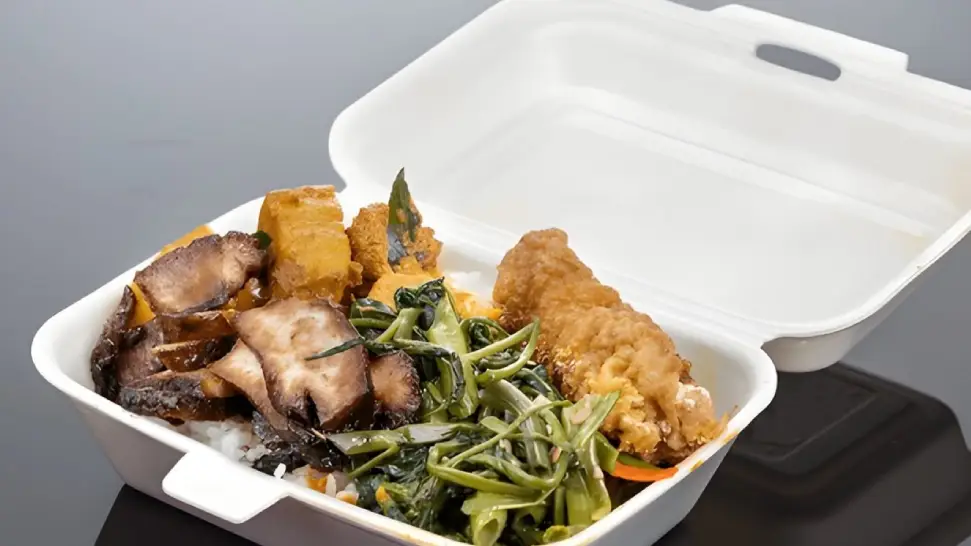
Given the widespread use of styrofoam in food packaging, it’s crucial to understand how to handle it safely, especially when reheating food. While general recommendations advise against microwaving unlabeled styrofoam, here are some tips to ensure safety:
Never Microwave Unlabeled Styrofoam
If your styrofoam container doesn’t have a “microwave-safe” symbol (wavy lines or a microwave icon), do not put it in the microwave. These containers are not designed to withstand microwave heat and can melt, deform, or leach harmful chemicals into your food, posing health risks.
Transfer Food to Microwave-Safe Dishes
The safest approach for reheating food that comes in a styrofoam container is to always transfer it to a designated microwave-safe dish made of glass, ceramic, or explicitly labeled microwave-safe plastic. This completely eliminates any risk of chemical leaching or container damage from microwaving the styrofoam.
Check for Microwave-Safe Label
Before placing any styrofoam in the microwave, diligently inspect the container for a clear “microwave-safe” label or symbol. Some manufacturers produce styrofoam products specifically designed for microwave use, and these will always be clearly marked to ensure consumer safety.
Be Aware of Hot Spots and Melting
Even with labeled microwave-safe styrofoam, monitor the container closely during heating. Microwaves can create uneven hot spots, and even approved styrofoam can soften or deform if overheated or if the food inside gets excessively hot. If you notice any changes in the container’s integrity, immediately stop heating.
Conclusion
In conclusion, microwaving styrofoam carries inherent risks due to the potential for chemical leaching. Prioritize your health by avoiding this common practice, even if a container claims to be “microwave-safe.” Opt for glass, ceramic, or truly microwave-safe plastic containers instead.
Making informed choices about food storage and reheating is essential for a healthier lifestyle. A little caution goes a long way in preventing unwanted exposure to harmful substances.
For businesses seeking reliable and safe packaging solutions, consider wholesale styrofoam packaging from Epsole. We offer high-quality EPS foam products designed for various applications, ensuring both product protection and user safety.
